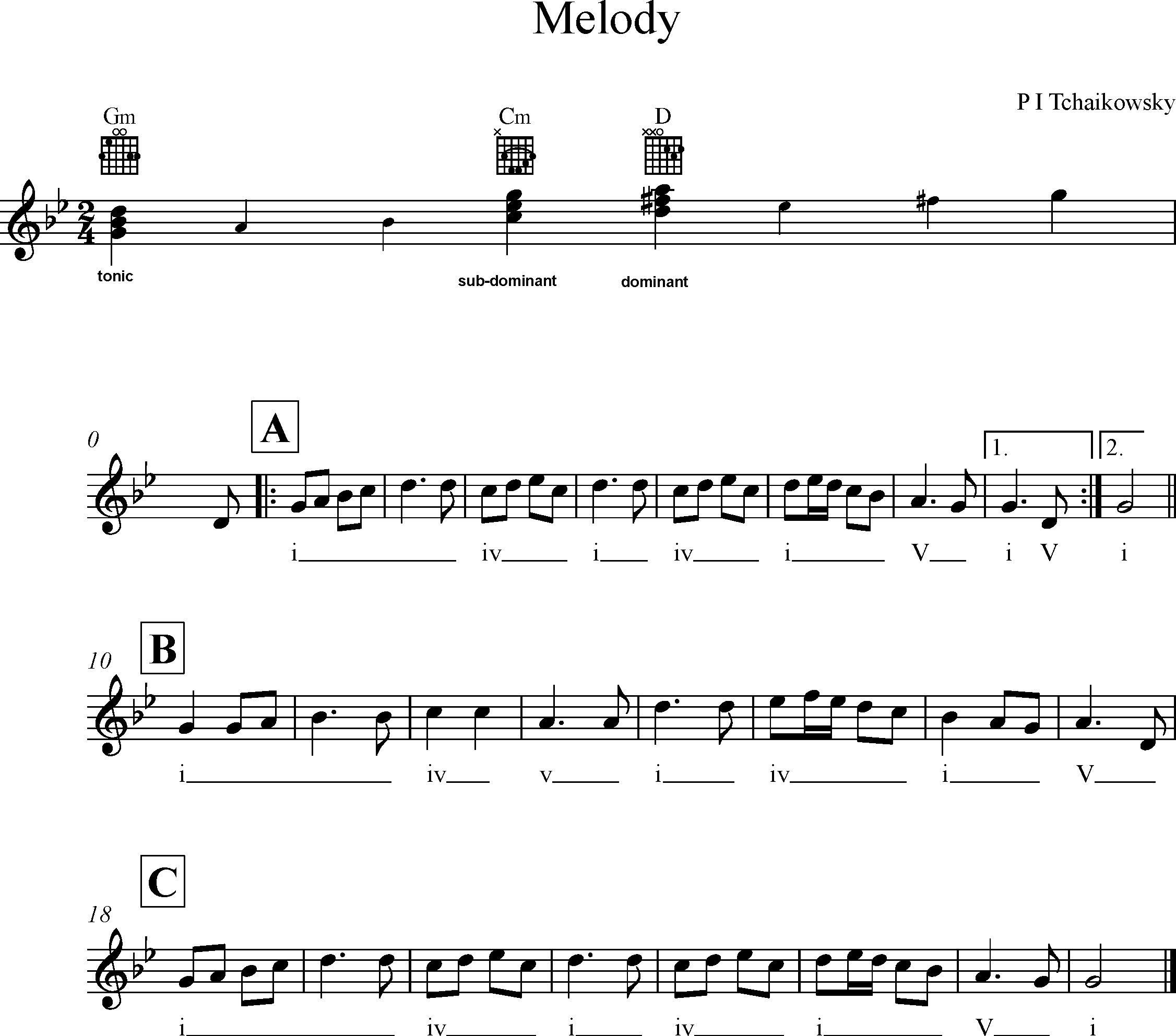The minor scale
Formulate a scale that begins on D following the pattern of intervals in the minor key. Then begin on G, C etc.
Melody writing exercises:
How do you decide on the notes of the melody?
- Use an instrument or your voice to create a small figure with a few notes.
- Try and extend the idea into a complete melody.
- Use long rhythms at the end of phrases.
- iv. Decide whether the leading note moves to the tonic – if so, remember that it’s necessary for the interval to be adapted to a half tone (e.g. in D minor: C# →D, or in C minor: B natural →C)
The sound of the mediant and submediant changes the character of the music and therefore affects the notes of the melody written in a minor key. Here is a melody that Tchaikovsky uses to create a sad mood.
A new symbol
This symbol tells the performer to repeat a line of music. As you play the first line (phrase A) for the second time, the performer omits bar 8 and jumps directly to bar 9. This is shown by using the following symbols (which are called first and second time bars).

Fig. 3

Try adding chords on an instrument such as piano, guitar or harp following the chords that have been marked below the line. Notice that line A is played twice and that it returns at the end of the melody as phrase C.

- You focussed on melodies’ rhythms in component 7.
- Look at the quotations in this component and look closely at the composers’ use of rhythm.
- Both the chords and the rhythms in Tchaikovsky’s melody have a clear pattern.
- Tchaikovsky uses the rhythm of a dotted crotchet (bars 2, 4, 7 and 8) to punctuate the musical line.